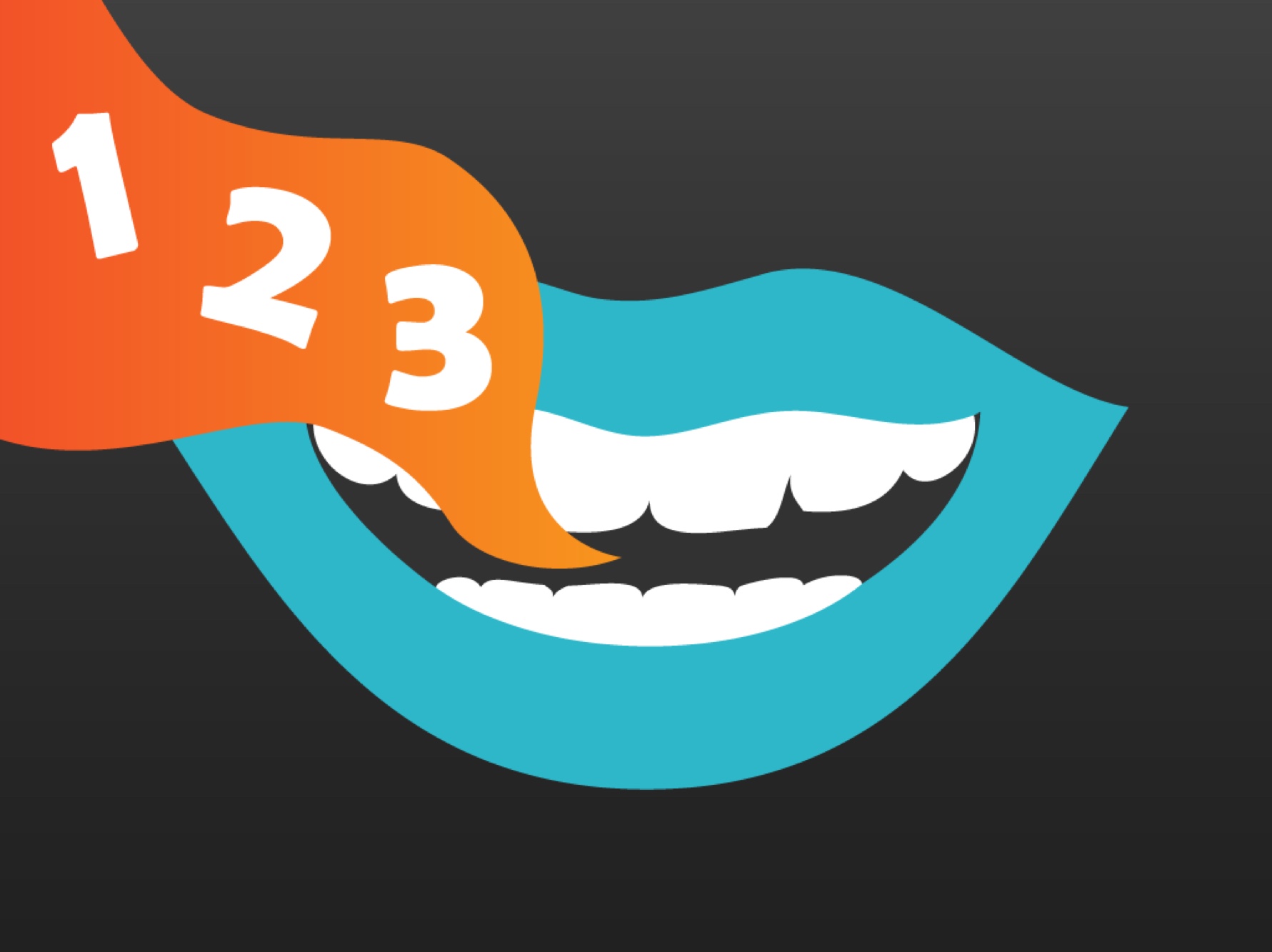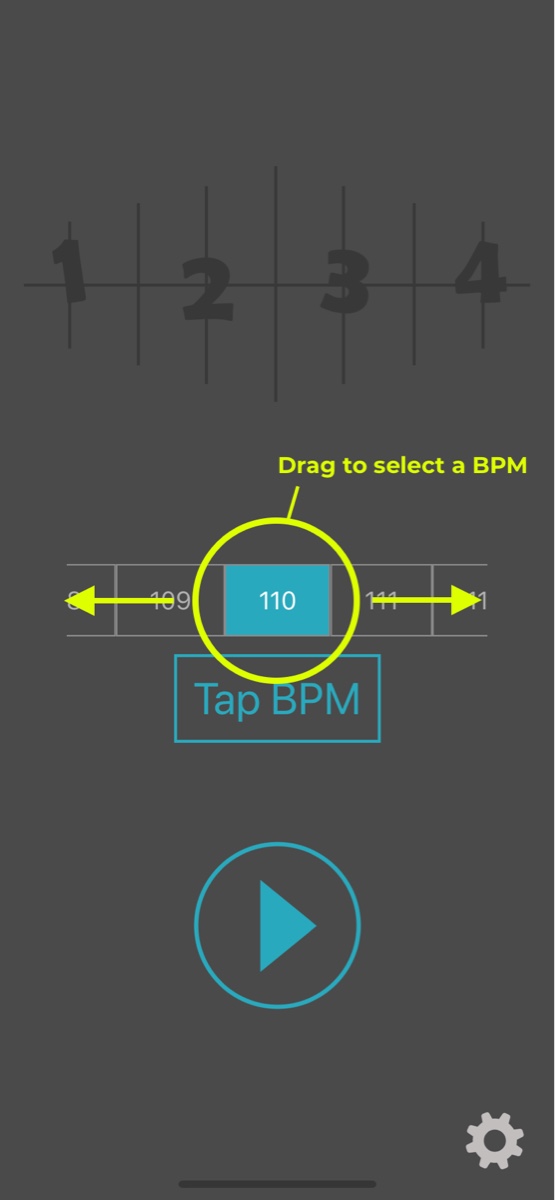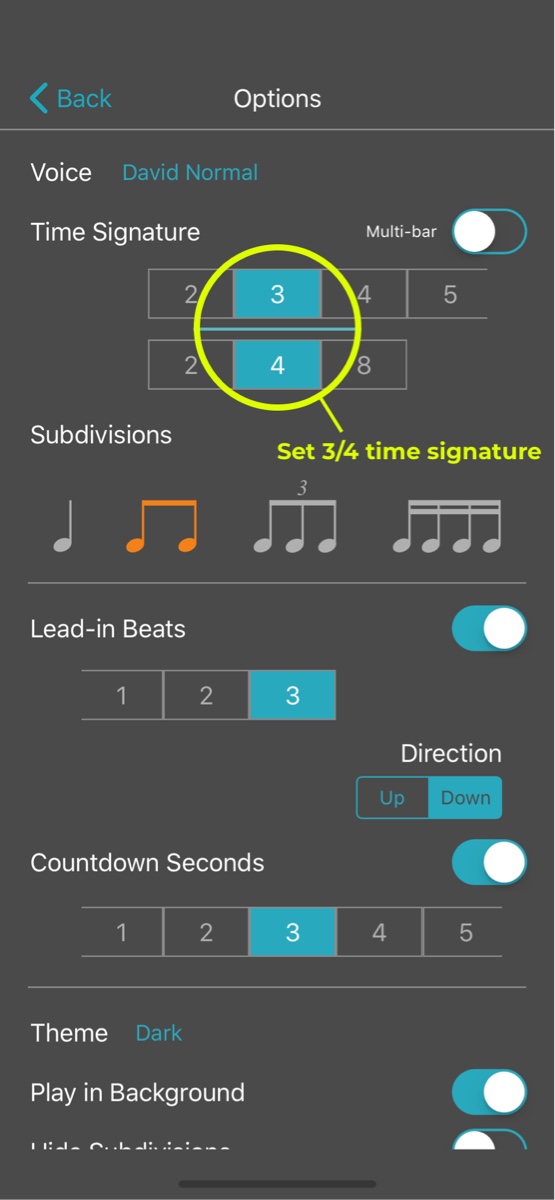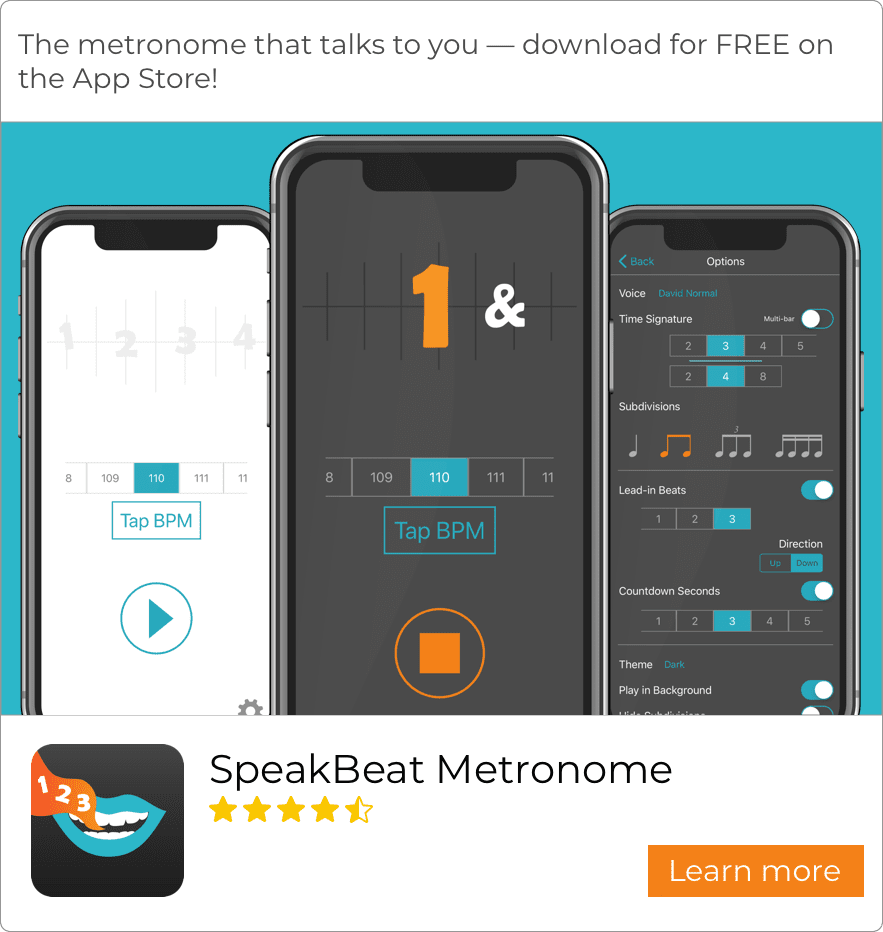What is a talking metronome?
A metronome is a tool which provides a beat (usually a tick sound) at precise intervals. Musicians such as drummers, violinists, piano players, guitar players, and singers practice along with metronomes to improve their ability to play rhythms consistently and accurately.
A talking metronome (or "voice counting metronome") is a specialized metronome which doesn't only tick, but uses a human voice to count beats out loud for you in words (e.g. "one-two-three-four"). This makes it easier for musicians to tell which beat they are on within the bar or passage.

Metronomes benefit both professional musicians, who want to improve their sense of rhythm and work through complex passages, as well as beginners who have just started singing or playing an instrument. A talking metronome is like having your music teacher sitting beside you and helping you keep track of time while you're practicing at home!
Perfect for Students and Teachers
A talking metronome is easy and effective to use for everyone, from kids to seniors. A voice that counts aloud creates a lesson-like environment for students who are practicing at home but still need help counting music so they don't get lost in the bar.
Some students have trouble hearing a regular metronome's ticks and will often find talking metronomes much easier to play along with.
Teachers who use a talking metronome app on a smartphone can plug into speakers via the headphone jack (or connect via Bluetooth) to provide a high-volume, steady beat for their students.
Where can I get a talking metronome?
SpeakBeat Metronome is a precise and free talking metronome available on the App Store for iPhone and iPad. This handy app lets users choose from dozens of natural, real human voices, both male and female, and even a few in other languages. Each voice can count as high as 12 beats per measure.
Physical metronones that also provide a human voice (such as the BOSS DB-90 Metronome) can cost over $100 on Amazon.
Since SpeakBeat is free, we will use this app as an example for how to setup and practice with a talking metronome (or any metronome, for that matter).
How to Use a Talking Metronome
Using a metronome might seem challenging, but it's actually not complicated! Beginner musicians tend to play easy passages too fast and hard passages too slow. By playing in time with the steady beat provided by a metronome, beginners can learn to play at a consistent tempo throughout a song.
When should you start using a metronome? You should probably wait until you're familiar with the music and its notes before using a metronome with that piece. Our article 4 Effective Metronome Techniques can help you learn how to effectively incorporate a metronome into your practice routines, while the article 5 Essential Metronome Questions ANSWERED might answer other questions you have.
Whether you're a pianist, guitarist, bassist, dummer, percusionist, or any other type of instrumentalist or vocalist, read on to learn how to configure your talking metronome.
How to Choose a Tempo (BPM)
Musical tempo is measured in beats per minute (BPM). If the BPM is equal to 80, for example, that means there should be 80 beats per minute, which could be described as a walking pace.
How do you know what BPM to use for music written in 4/4 or 7/8 or 3/4 time? Well, most music should provide either the BPM directly (written at the top of the score, like ♩ = 120, for example) or a range suggested by a tempo marking ("andante", for example, which means "at a walking pace", which means 92-112 BPM).
Fortunately, our example talking metronome, SpeakBeat Metronome, supports a wide range of beats per minute, from 20 to 320. From the start screen, you can tap and drag to slide the BPM selector left (for slower BPMs) or right (for faster BPMs) and then tap the big play button to start the metronome voice counting.

Setting the BPM for a voice counting metronome
Configure Your Talking Metronome for a Time Signature
A time signature is found at the beginning of a piece of music, after the clef, and is given by two numbers, one stacked on top of the other. The top number indicates how many beats you should count per measure, while the bottom number indicates the type of note which gets the beat. For example, a lower "4" in the time signature means each beat is the length of a quarter note. Likewise, a lower "2" indicates a half note gets the beat, and a lower "8" indicates an eigth note gets the beat.
Putting that all together, how would you count a 4/4 time signature? Well, the top "4" means we count four beats per measure. The bottom "4" means each beat is the length of a quarter note. Thus we'd count "one-two-three-four" beats per bar.
SpeakBeat Metronome supports a wide range of time signatures, including standard ones like 4/4 or 6/8 to more unusual ones like 7/8 or 12/4. To set a time signature, first go to the settings screen (tap the gear icon in the bottom right of the screen). Then drag the top slider to choose the top number (how many beats per bar) and the bottom number (the type of note getting the beat).

Setting a 3/4 time signature for a voice counting metronome
Want to count a compound time signature? SpeakBeat Metronome can also count various subdivisions ("one-and-ah-two-and-ah") for you. Any simple or compound meter up to a count of 12 is possible!
This high level of customizability — being able to specify the beats per minute, the time signature, the subdivisions to count out loud, and more — makes SpeakBeat Metronome flexible enough to meet your unique rhythm training needs, no matter the song or musical style.
Advanced Configurations
SpeakBeat Metronome provides tons more options to configure the talking metronome for any individual practice session. Beats can be interpreted anyway you want, and the ability to set so many different meters and subdivisions allow for maximum flexibility.
If you want to practice mixed meter music, or a complex passage which changes time signature partway through, SpeakBeat can do that, too. Enable the "multi-bar" feature and program up to four different time/signatures and subdivision counts which will cycle repeatedly.Learn more
SpeakBeat Metronome is a great free tool with many more customizations available. You can download it today on the App Store for your iPhone or iPad.

